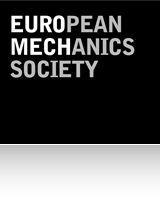519 – Mixing and dispersion in flows dominated by rotation and buoyancy
Date:
20 June 2010 – 23 June 2010
Location:
Conference Centre Rolduc, Limburg, NL
Chairperson:
Prof. Herman Clercx
Fluid Dynamics Laboratory, CC 2.15
Department of Applied Physics
Eindhoven University of Technology
PO Box 513
NL-5600 MB Eindhoven
The Netherlands
phone: + 31 40 247 2680
fax: + 31 40 246 4151
email: h.j.h.clercx@tue.nl
Co-chairperson
Dr. Beat Lüthi
ETH Zürich
Institut f.Umweltingenieurwissenschaften
HIL G 37.1
Wolfgang-Pauli-Str. 15
8093 Zürich
Switzerland
phone: +41 44 633 30 68
fax: +41 44 633 10 61
email: beat.luethi@ifu.baug.ethz.ch
Rotation and buoyancy play an essential role in many geophysical, environmental and industrial flows. It strongly affects the flow properties such as inducing anisotropy of the flow and dramatically changing the turbulence properties. This inevitably has a strong impact on the dispersion of passive and active tracers and (inertial) particles in such flows. The aim of the Colloquium is to bring together researchers with interests in theoretical descriptions and numerical studies of the mixing and dispersion properties of rotation and buoyancy dominated flows, and experimentalists on rotating, stably stratified and buoyancy-driven flows, respectively. Satellite and field observations play an essential role in mixing and dispersion studies of large-scale geophysical and of environmental flows. It is intended to encourage colleagues from this field to contribute to the Colloquium. Topics of interest range from the fundamentals of mixing and dispersion in canonical systems such as vortices in rotating or stratified fluids, but also homogeneous rotating or stratified turbulence, to mixing from an Eulerian/Lagrangian point of view in geophysical, environmental and industrial flows. Special attention will also be given to interdisciplinary topics where fluid mechanics and mixing are central themes. Some examples include the (large-scale) dispersion of marine species in oceans, estuaries and lakes, mixing in drinking-water supplies, transport in rivers and estuaries, and ventilation, comfort and safety aspects in buildings and public transportation systems.
